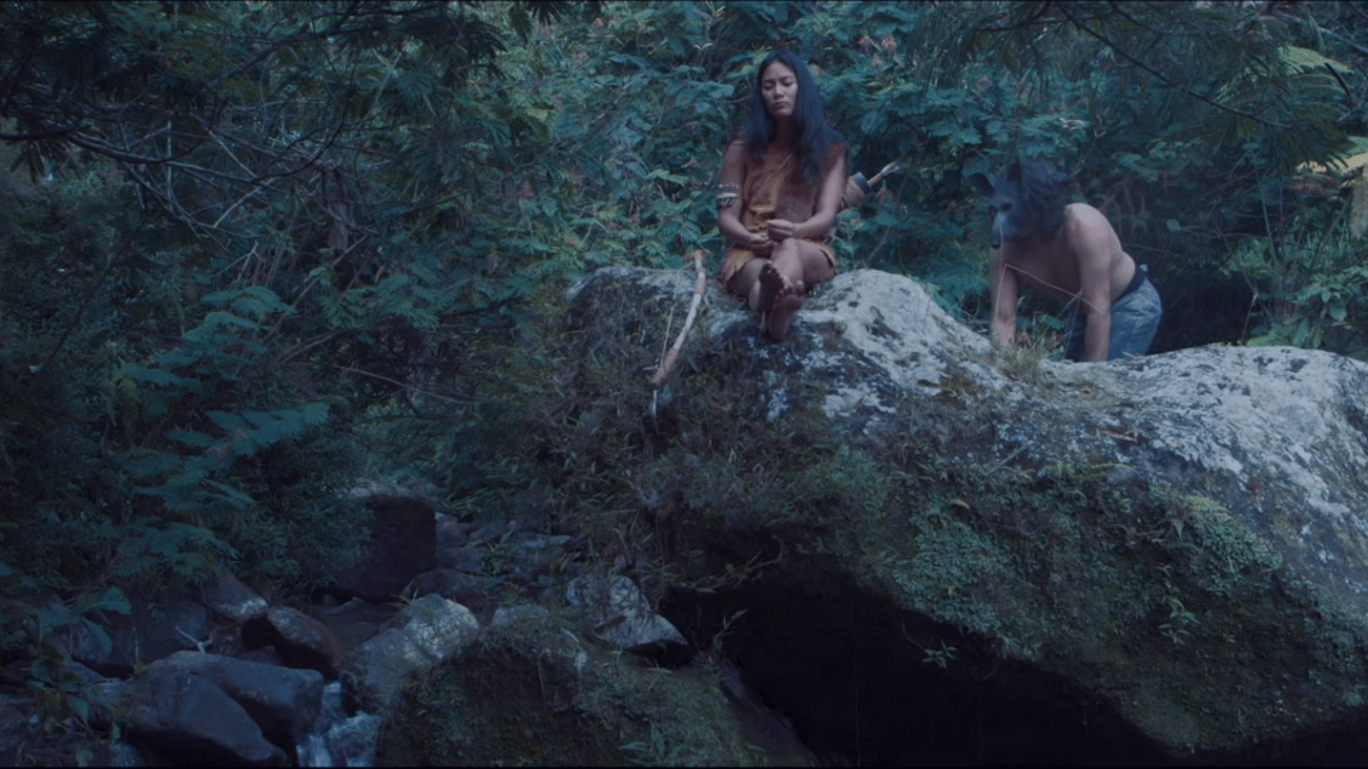
Asa is the daughter of a seer. To escape her mother’s clutches, she lives hidden in a forest. One day, she is collected by a dog, who turns out to be a man sent by her mother. A dreamy, absurdist fantasy film based on Indonesian legends.
| Reviewed by: Ivan Chin
Inspired by Indonesian folklore, Another Trip to the Moon explores a ritualistic and intimate life in the forest, in harmony with the spirits that inhabit it. It’s a meditative experience constructed through a tribal setting, creating a dependency between people and nature. Ismail Basbeth’s debut feature, while experimental, is still rooted in culture and beliefs. It proves to be a challenging yet provocative film that works up the audience’s intrigue. While chanting, singing, and ghostly whispering can be heard, it is still fundamentally a silent film. This minimalistic approach can be challenging for both the filmmaker and audience, but it also draws your attention so you’re much more focused on what is happening on screen. Where traditional silent films intercut with dialogue cards, this relies purely on the cast’s performance. It practically obeys the ‘show, don’t tell’ tenet that is harped on. While it felt a tad alienating at first, I soon settled into the rhythm of the motions. Don’t let the lack of dialogue portray this film as being inaccessible though. Unlike Tsai Ming-Liang or Apichatpong Weerasethakul, I wouldn’t call this slow cinema, but it is an acquired taste. Despite the experimental nature of this film, the narrative and themes are still thought out. Within the tribal environment, the couple hunt and forage for food, clothed in pelts and sleep in a nest of their own making. They perform their own rituals, both for survival and out of their beliefs. We also see other performers wearing animal masks, as spirits roaming the forests, unbeknownst to their human counterparts.
The film is rather committed to the absurd too, with high tech elements introduced into the tribal setting. To some, this might seem jarring, but I think it’s a creative risk new filmmakers ought to take, as it adds an extra layer of mystique. These are not done for the sake of it though, and still tie in to the overall narrative and folklore. There’s also a fine line that exists between the raw tribal behaviour and more civilized mannerisms. This difference is more obvious when the film cuts between Asa and her mother, but starts to blur when the two worlds eventually merge. Debut films like these usually allow for more ambitious techniques, as the filmmaker works out how they want to tell a story. For Ismail, using folklore as a narrative foundation allowed him to experiment with how it was being told. It’s a provocative piece not because it’s necessarily complex, or even due to it being abstract. Rather, it takes the familiar and injects alien elements, resulting in a film that seems out of the ordinary at times but will leave one with more to ponder. _ Ivan Chin is film lover who enjoys a variety of genres, from blockbusters to avant-garde cinema.He has a penchant for Chinese cinema, specifically Hong Kong, and wants to see more local films gain recognition. He tries to write something about each film he watches as he feels there’s certainly something worth mentioning. |
Click Here For More Film Reviews
Do you love writing? Send us a film review and we will feature it on our website. Any film that people can see in the theater or online. Email to: media@scape.sg
This review is also published on Sinema as part of *SCAPE’s Film Critics Lab: A Writing Mentorship Programme.

